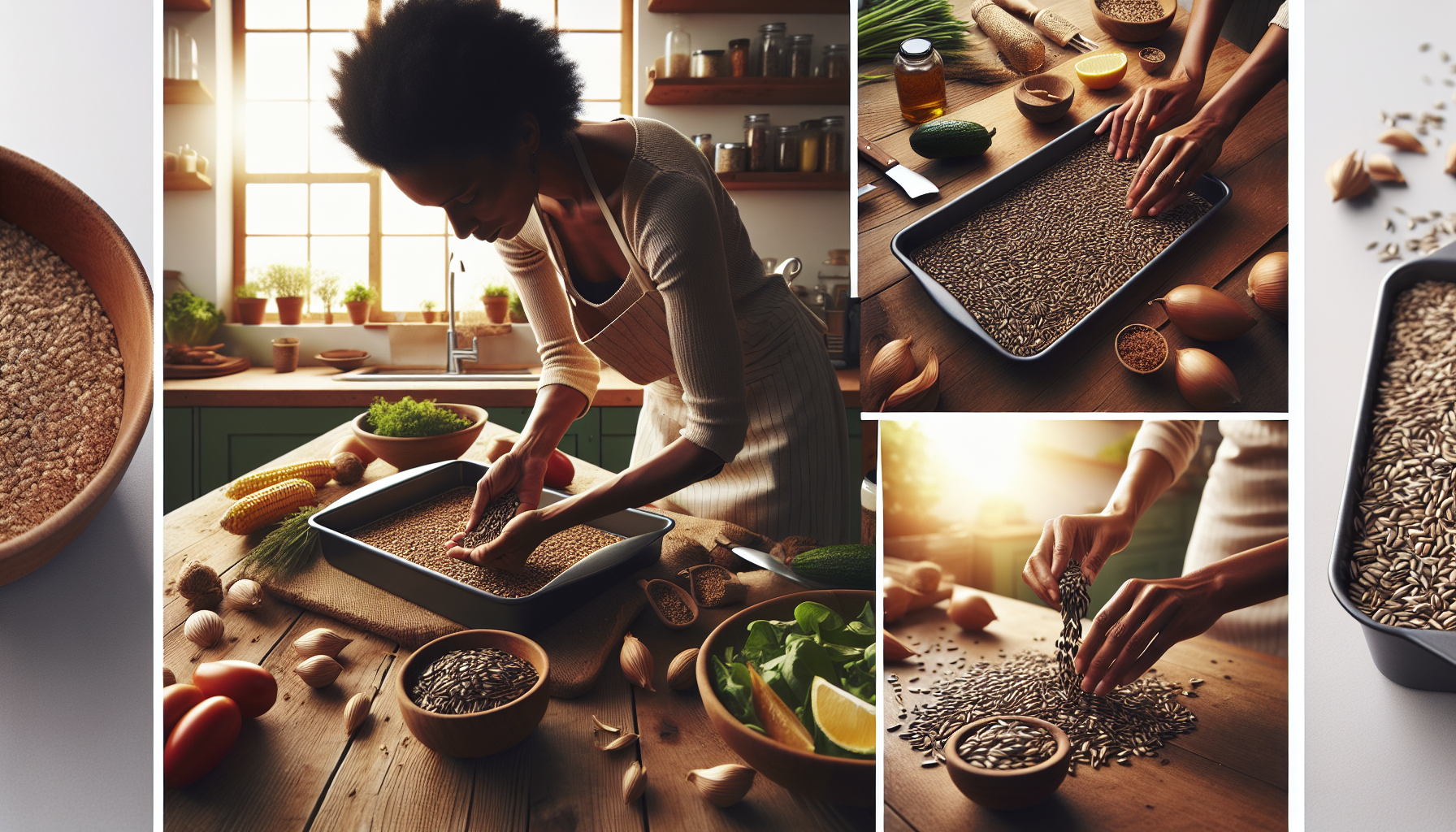Exploring Roasting Organic Seeds for Crunchy Toppings
Imagine sprinkling a handful of crunchy, flavorful seeds over your salad, soup, or yogurt. Not only do they add a delightful texture, but they also boost the nutritional value of your meal. Roasting organic seeds is a simple yet transformative process that can elevate your dishes to new heights. In this guide, we’ll explore the art of roasting organic seeds, from selecting the best varieties to mastering the perfect roasting technique. Let’s dive in and discover how to create the ultimate crunchy toppings!
Choosing the Right Organic Seeds
The first step in creating delicious roasted seed toppings is selecting high-quality organic seeds. Organic seeds are free from harmful pesticides and chemicals, ensuring a pure and nutritious product. Some popular choices for roasting include sunflower seeds, pumpkin seeds, sesame seeds, and chia seeds. Each type of seed offers unique flavors and nutritional benefits, so feel free to experiment and find your favorites.
Sunflower seeds, for instance, are rich in vitamin E and selenium, which are powerful antioxidants that support immune health. Pumpkin seeds, on the other hand, are an excellent source of magnesium, iron, and zinc, making them a great choice for boosting overall well-being. Sesame seeds are packed with calcium and healthy fats, while chia seeds are renowned for their high fiber and omega-3 content. By choosing a variety of organic seeds, you can create a well-rounded and nutritious topping for your dishes.
Preparing Your Seeds for Roasting
Before you start roasting, it’s essential to properly prepare your organic seeds. Begin by rinsing the seeds under cold water to remove any dirt or debris. If you’re using pumpkin seeds, you may need to separate them from the stringy pulp. Once rinsed, pat the seeds dry with a clean kitchen towel or paper towel.
Next, you can choose to soak your seeds in water for a few hours or overnight. Soaking can help improve digestibility and nutrient absorption, especially for seeds like chia and flax. However, this step is optional, and you can proceed directly to roasting if you prefer.
Mastering the Roasting Process
Roasting organic seeds is a straightforward process that requires minimal equipment. All you need is a baking sheet, parchment paper, and an oven. Preheat your oven to 325°F (165°C) to ensure even roasting without burning the seeds.
Spread the prepared seeds in a single layer on the parchment-lined baking sheet. If you’re roasting multiple types of seeds, you can mix them together or roast them separately, depending on your preference. Lightly drizzle the seeds with a healthy oil, such as olive or avocado oil, and toss to coat evenly. This helps the seeds roast more uniformly and adds a subtle flavor.
Sprinkle your seeds with a pinch of salt or your favorite seasonings to enhance their taste. Popular options include garlic powder, paprika, or a blend of herbs like rosemary and thyme. Get creative and experiment with different flavor combinations to find your perfect match.
Place the baking sheet in the preheated oven and roast the seeds for 10-15 minutes, stirring halfway through to ensure even browning. Keep a close eye on the seeds, as they can quickly go from perfectly roasted to burnt. The seeds are ready when they turn golden brown and emit a nutty aroma.
Once roasted, remove the seeds from the oven and let them cool completely on the baking sheet. As they cool, they will become even crunchier, making them the perfect topping for your favorite dishes.
Creative Ways to Use Roasted Organic Seeds
Now that you have a batch of delicious roasted organic seeds, it’s time to put them to good use. The possibilities are endless, but here are a few creative ideas to get you started:
Salad Toppers: Sprinkle roasted seeds over your favorite salads for an extra crunch and burst of flavor. They pair particularly well with leafy greens, roasted vegetables, and tangy dressings.
Yogurt and Oatmeal: Add a spoonful of roasted seeds to your morning yogurt or oatmeal for a nutritious and satisfying breakfast. The seeds will add texture and keep you feeling full until lunchtime.
Soups and Stews: Use roasted seeds as a garnish for soups and stews. They add a delightful crunch and a nutty flavor that complements the warmth of the dish.
Homemade Trail Mix: Combine roasted seeds with dried fruits, nuts, and dark chocolate chips to create a delicious and energizing trail mix. It’s perfect for snacking on the go or as a pre-workout boost.
Baking and Cooking: Incorporate roasted seeds into your baking and cooking recipes. They can be used in bread, muffins, granola bars, and even as a coating for fish or chicken.
Storing and Preserving Your Roasted Seeds
To keep your roasted organic seeds fresh and crunchy, proper storage is key. Once the seeds have cooled completely, transfer them to an airtight container, such as a glass jar or a resealable bag. Store the container in a cool, dark place, like a pantry or cupboard.
Roasted seeds can last for up to a month when stored properly. If you want to extend their shelf life, you can also store them in the refrigerator or freezer. Just be sure to let them come to room temperature before using them as a topping to preserve their crunch.
By following these simple storage tips, you can enjoy your roasted organic seeds for weeks to come, adding a nutritious and flavorful touch to your meals whenever you desire.
Roasting organic seeds is a simple yet rewarding process that can transform your meals into culinary delights. By choosing high-quality organic seeds, mastering the roasting technique, and getting creative with your usage, you can enjoy the benefits of these nutritious and delicious toppings. So, the next time you’re looking to add a crunch to your dish, reach for a handful of roasted organic seeds and elevate your meal to new heights!

